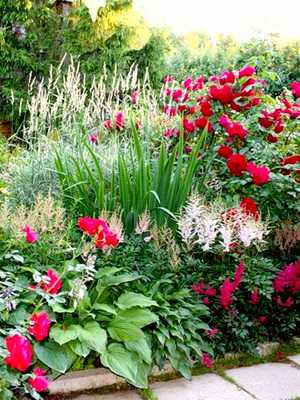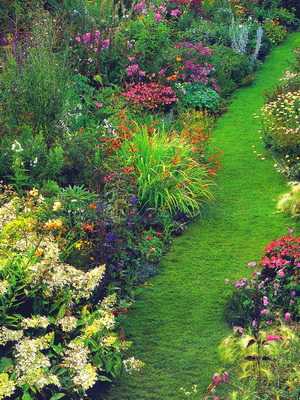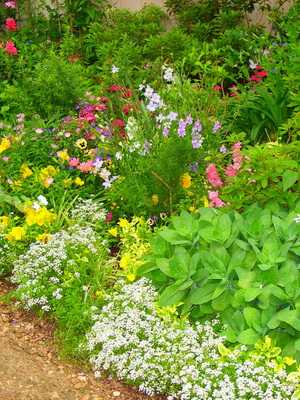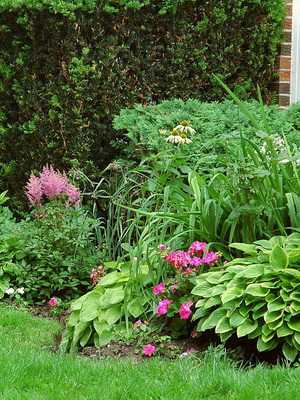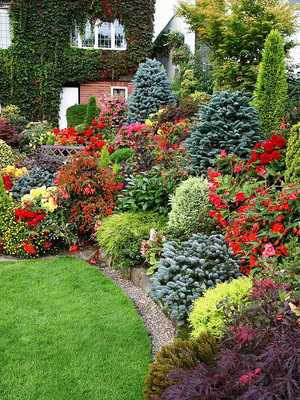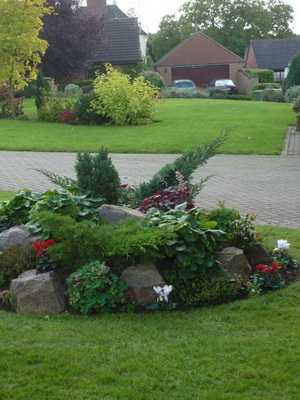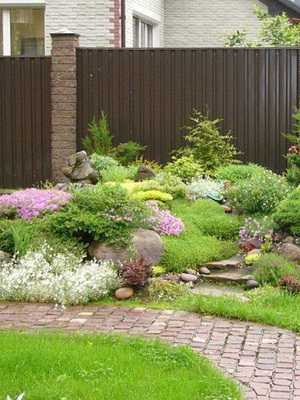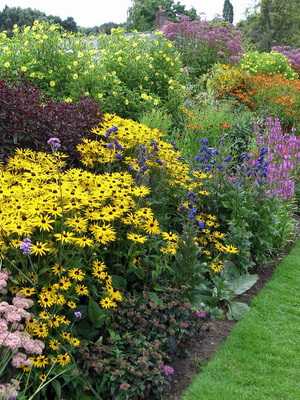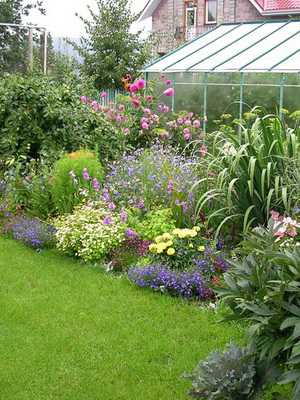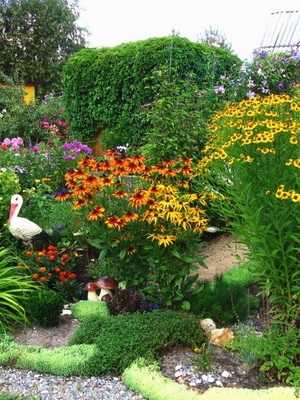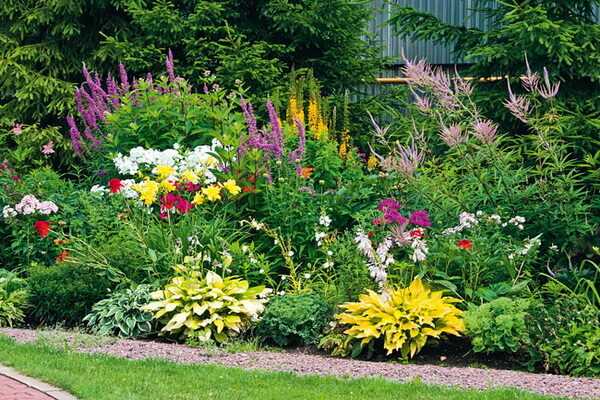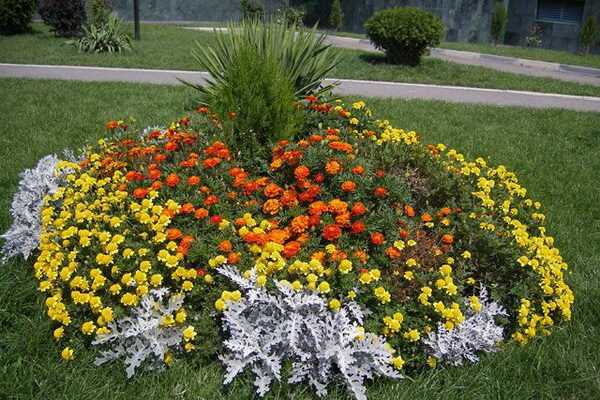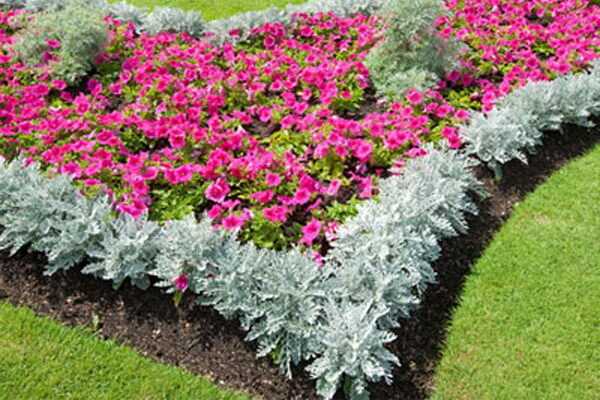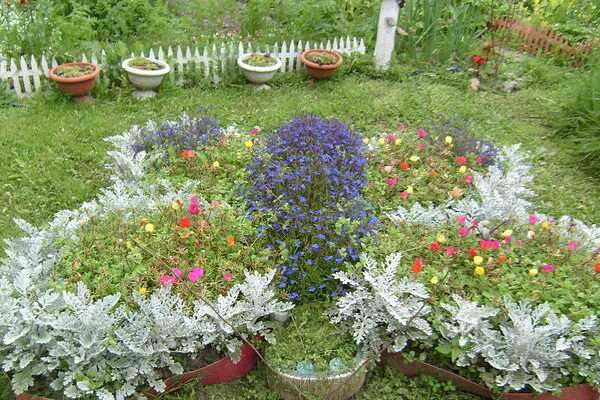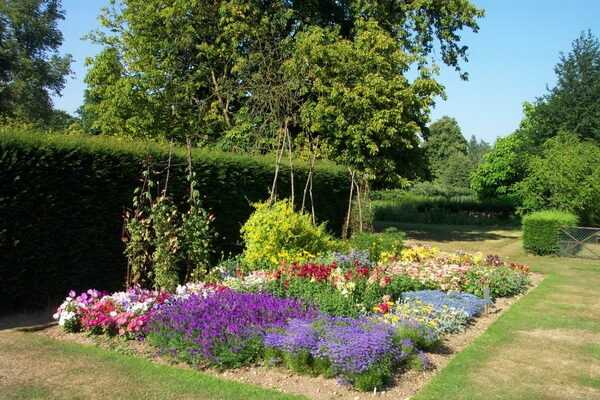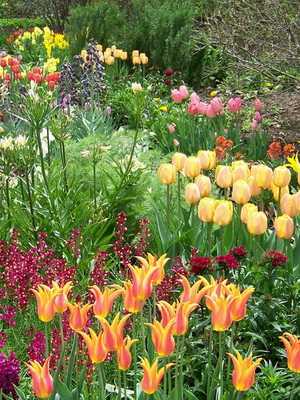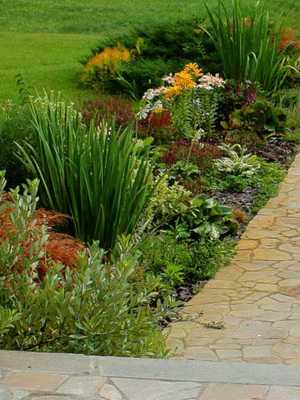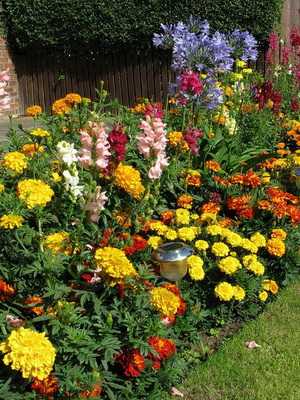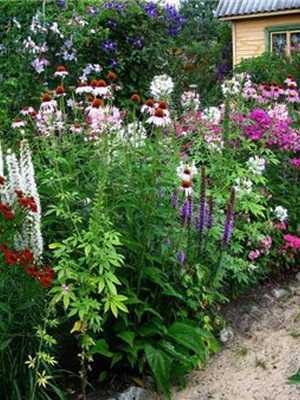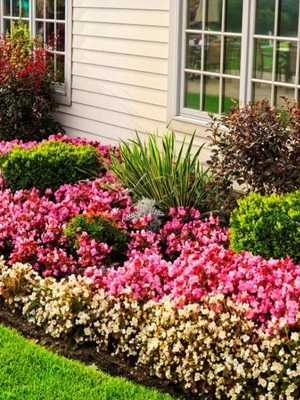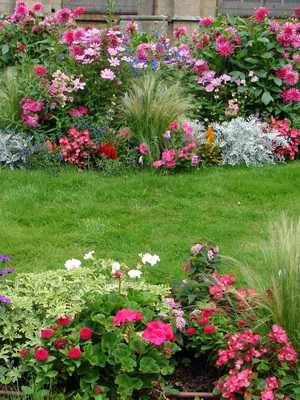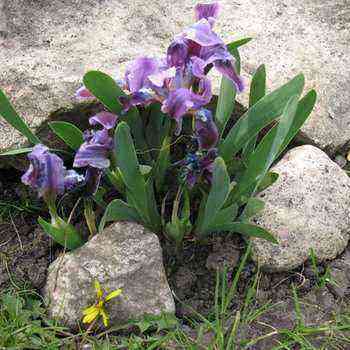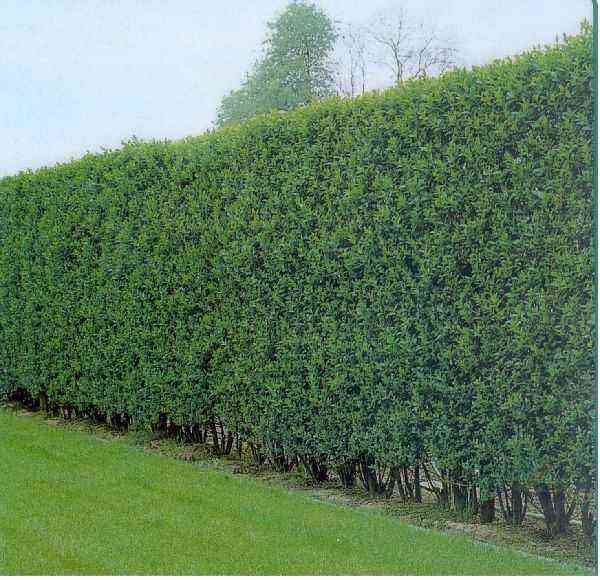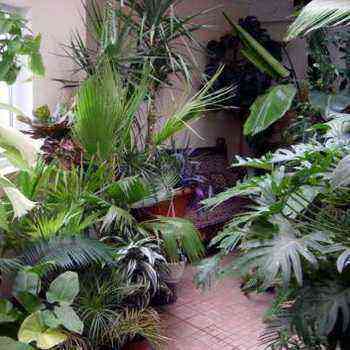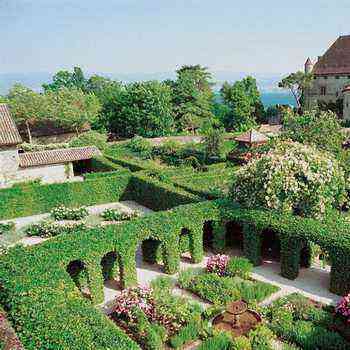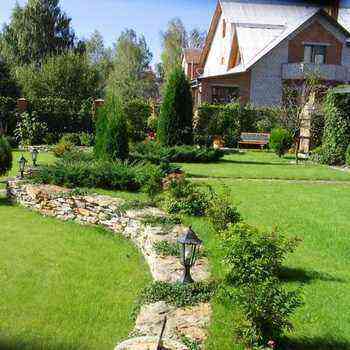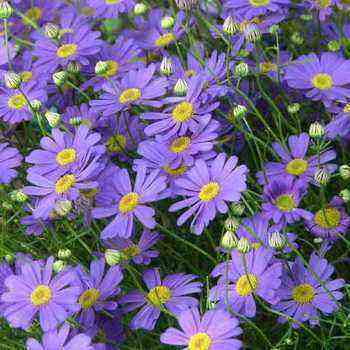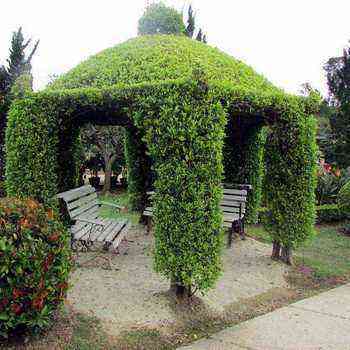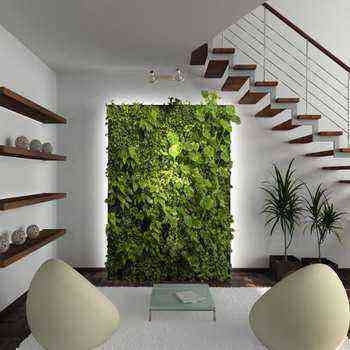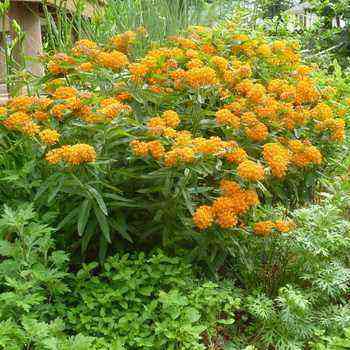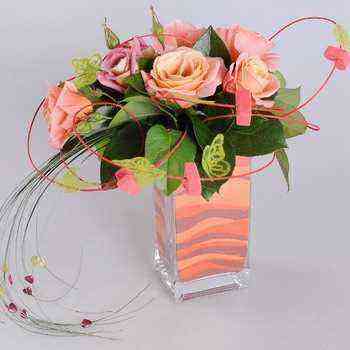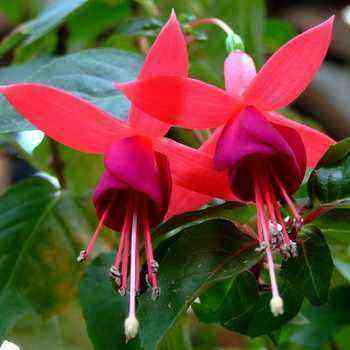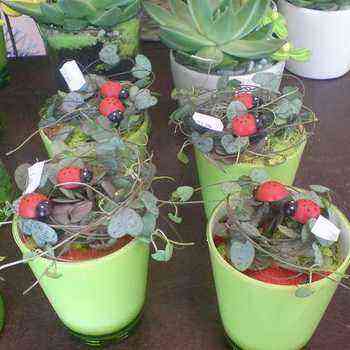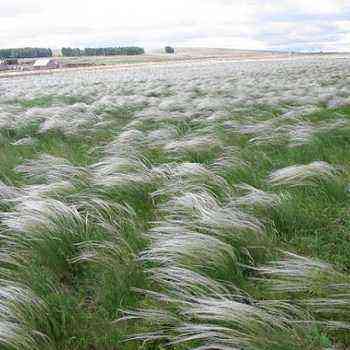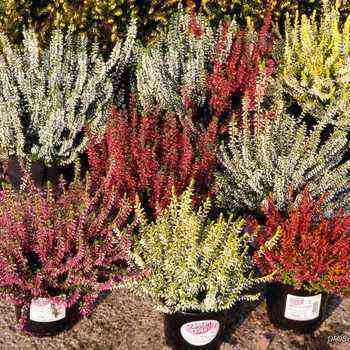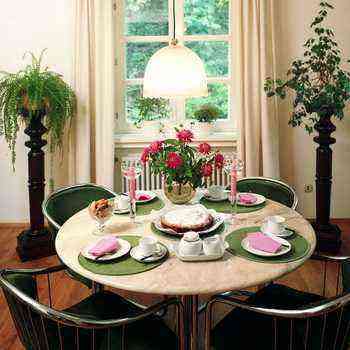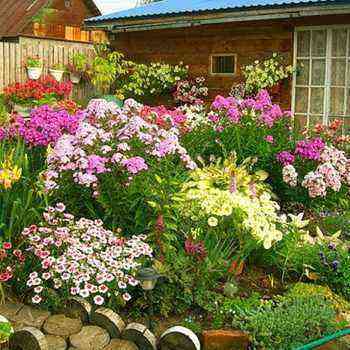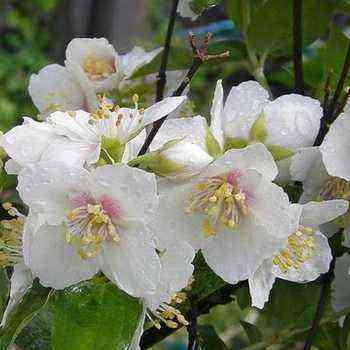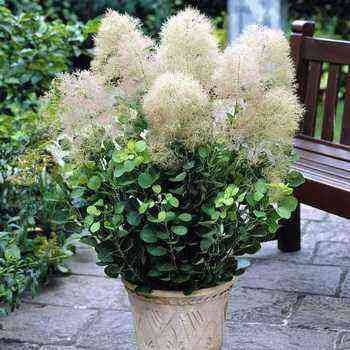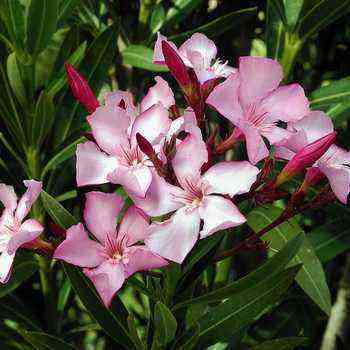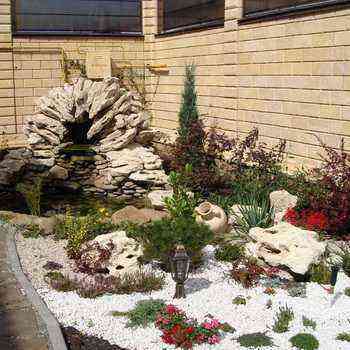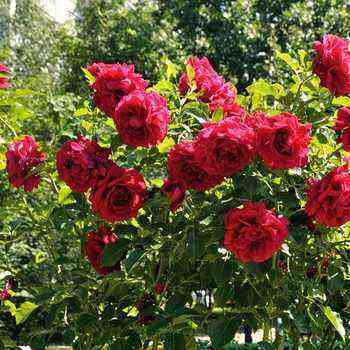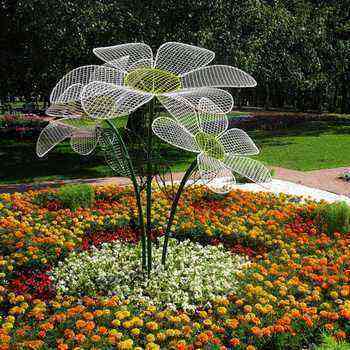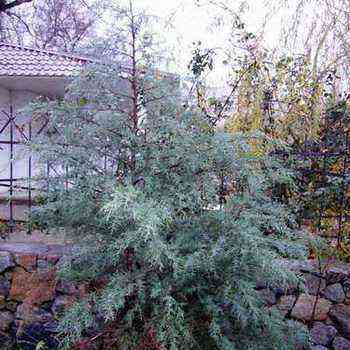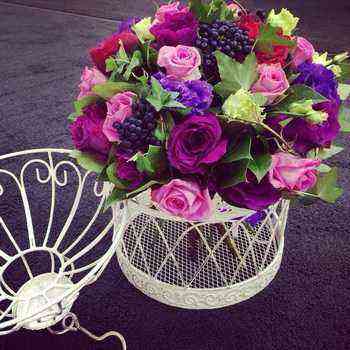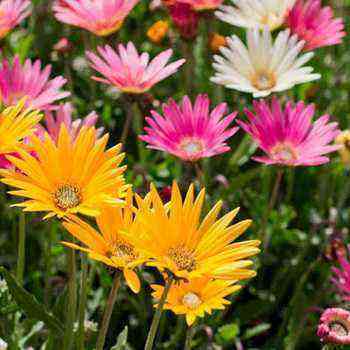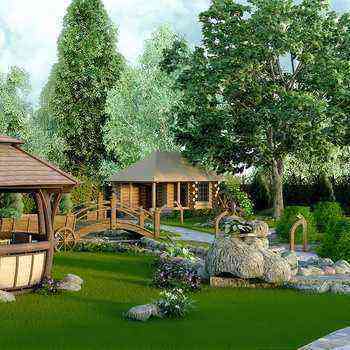
What is a mixborder and how to create it yourself
No matter how good the plants themselves are, only by creating wonderful compositions from them can we get a perfect garden. Now, following the example of the British, they began to call wide stripes in which not only annuals and perennials, but shrubs and trees can grow as borders. Often the florist starts with a narrow border of one plant species bordering the lawn, but gradually he (and his plants!) Becomes cramped within these borders, the border and the range of plants in it become wider. Such wide borders from many species and varieties of plants have come to be called mixed borders, or mixborders. So what is a mixborder, and what kind of plants can you grow in it?
Mixborder – this is a composition in which all types of life forms of plants can participate (not only perennials, annuals, but also trees, shrubs, bulbs, vines, etc.), grown together, as well as “inanimate” components such as flowerpots, balls, benches , supports for vines, sculptures, etc.
How to create a mixborder, do it yourself, in order to comply with the basic principle of this compositional solution? To do this, plants are planted in mixed curbs with a width of 1,5-4 m in groups (curtains), so that the higher ones do not interfere with admiring the lower ones. The species composition of plants for a continuous flowering mixborder is selected in such a way that something blooms in it all the time.
Making a mixborder: basic requirements
So, it has been decided – we are making a mixborder – but for this you need to choose the “right” green spaces. Before making a mixborder, you need to purchase plants with the same agrotechnical (or environmental) requirements, that is, with similar requirements for illumination, moisture, acidity and soil fertility. A diseased plant cannot be beautiful, if you want it to be healthy, provide its needs.
Illumination is one of the main requirements for creating a mixborder. It is almost impossible to organize it, it is better to take it for granted. It is generally accepted to consider a place to be sunny if in summer, when the trees are already covered with foliage, it is illuminated for more than 7 hours a day. A place is considered shady if the sun’s rays illuminate it for less than 3 hours a day, and semi-shady if the sun gets there from 3 to 7 hours.
Plants also vary greatly in terms of moisture requirements. About how to make a mixborder with your own hands, evaluate if you can water the plants regularly? If there is no such opportunity (or desire!), Limit yourself to drought-resistant plants, there are enough of them, it is quite possible to pick them up. There are also plastic plants that can exist not only in ideal conditions, but adapt to what is available.
Each plant has its own preference for soil acidity. Most garden plants prefer slightly acidic soil, but some, such as wormwood, like neutral and even alkaline, and rhododendrons can only live on highly acidic.
No less acidity and structure of the soil, its fertility is important. There are plants that prefer poor soil, on rich soil they will suffer.
For example, sedum, carnations, wormwood, dahlias and gladioli will suffer on poor soil. There is an optimum soil fertility for each plant.
How to create mixborders correctly
And how to create mixborders correctly so that the plantings do not look neglected and delight you for as long as possible? Before setting up a flower garden, prepare the soil for planting plants. For example, if you have clay soil, improve its structure by adding sand and peat, if necessary, deacidify, dig up and select the rhizomes of perennial weeds – now it is suitable for planting most garden plants. There is also an alternative option – for example, completely replace the existing soil with a loose acidic substrate and arrange a heather garden. The first option seems to me preferable, it is more economical and predictable, and suitable ornamental plants can be found for any soil situation, but in your garden you can do as you want.
As you can see in the photo, the mixborder in the garden should fit into the general concept of the infield. Decide what you want to do with it. Planting something pretty in front of the fence or covering the corner of the house? Arrange a gorgeous flower garden of your favorite plants on the lawn? Turn an ordinary bench into a wonderful oasis for relaxation? Disguise a modest shed or “cover up” the garden area? Your ideal is a scent garden? A properly designed mixborder can solve any problem. You can list the options for gardeners’ wishes for a long time, clearly formulate the main idea, the concept of a flower garden, you must before creating it.
First of all, decide where you will admire it from. Mixborders, which can be viewed from all sides, are called island beds, their borders are smooth, beautifully shaped closed curves or straight lines. Plants in any mixborders are always arranged in tiers so that the tall ones do not block the lower ones from the view. The largest plants of the island mixborder are planted in its central part. An island flower bed is always located inside a lawn or gravel, you must try to fit it into the garden space as skillfully as possible.
If you need a one-sided view mixborder, for example, against the background of a fence, then the tallest plants are located far from us, at the fence, and the lowest ones – at its front border. Such a composition should have beautiful and clear boundaries with the lawn, it should harmoniously fit into the garden.
Mixborders differ in the type of decorativeness – mixborders of continuous flowering are good all season, seasonal ones are stunning at a certain period, all the rest of the time they are uninteresting, at best aesthetically neutral.
Seasonal flower beds are admired at the moment of their decorativeness, the rest of the time they are seen only by the one who cares for them, they are good, but it is not easy to find a place for them in a small garden.
Plants for the foreground mixborder: aspects of selection
If the composition lacks a clear boundary, the impression of it is blurred. The leading edge is very important. When choosing plants for the foreground of a mixborder, there are two aspects to consider.
Aspect one – the boundary between the composition and the lawn must be clear and beautiful. It can be fixed with large stones, made with logs, the most effective is the classic English version in the form of a small groove of black earth between the trimmed lawn and the flower garden. All three options require maintenance of the boundary line – you need to periodically correct it and cut a narrow strip of grass that the lawnmower cannot mow. It is most reasonable to “fix” the border of the flower garden by arranging a narrow border of tiles or bricks along its border. Only if your flower beds have beautiful and clear boundaries, the garden will look perfectly well-groomed!
Aspect two – the edge of the composition should “keep” the plants stably decorative for the longest possible period, preferably evergreen or winter-green, for example, badan, hellebore, heuchera, low daylilies, cinquefoil and spirea, brunners and lungwort are suitable, creeping conifers and short annuals are suitable.
Pay attention to the photo: in beautiful mixborders they use a technique when a “transparent” plant is planted in the foreground, through which, as through a veil, it is especially interesting to look at plants planted deeper.
An important condition for the success of a one-sided view composition is the presence of a good background against which it looks; a decent fence, a trellis with vines, a wall of a house, a tree and shrub group, or, as here, a high sheared hedge, can act worthily. If a beautiful mixborder is planted against the background of a rickety shed, a heap of old boards or something else just as “decorative”, the effect of it is reduced to zero, except for irritation, it will not cause any feelings.
Perennial and annual plants for beautiful mixborders in country gardens (with photo)
Most plants flower for a short period of time, for example, a peony does not exceed a week. In a flower arrangement, the main thing is not short-term flowering, more important is the effective combination of plants, and not only and not so much flowers, but the forms of plants, shapes and textures of leaves of perennials and annuals. Each plant can be modest, it is not a single, luxurious or simple specimen that is important, but the “chorus” of plants. You should not be upset that there are almost no long and abundantly flowering plants (perhaps these are only annuals), it is more correct to enjoy every moment of garden beauty, its charm lies in continuous variability.
Flowering is fleeting, this is just a bonus, a prize that plants give us, the main thing in them is the leaves, not the flowers. Have you noticed which plants are currently the most popular?
Such plants are very effective for a mixborder of perennials, such as hosts, rogers, ferns, bergenia, buzulniks, etc. The soft cuff is charming not only flowering in the form of yellowish-green clouds of tiny flowers, for us its leaves, round, fleecy holding drops of dew or rain in their centers. In Brunner, we value not so much the delicate and touching forget-me-not flowers that appear in spring, but the amazing leaves of new varieties that are attractive all season. Perfect contrast with large leaves – delicate fern leaves, corydalis, dicentra.
Huge glossy bluish host leaves, rough matte leaves of lungwort with white spots, split hellebore foliage, a fountain of openwork fern wai, small leathery rhododendron leaves that are about to bloom again in the second half of September, a spectacular contrast of textures, shades of greenery, leaf sizes and shapes, a real feast for the soul of a garden gourmet. Here it is appropriate to recall ornamental grasses and sedges, as well as other plants with the so-called grass-like (long and narrow) leaves – these are Siberian irises, daylilies, tradescantia. Their leaves are good in combination with abundantly flowering plants such as heliopsis, echinacea, rudbeckia.
Leaves not only support the decorative effect of beautiful mixborders of perennials and annuals throughout the season, they can emphasize the beauty of the flowers and the color scheme of the composition. The silvery foliage of the Samurai lungwort will decorate any composition. The creamy stripe along the edge of the leaves will accentuate the whiteness of the white flowers, the golden foliage will contrast effectively with the blue or purple flowers. For flower beds with red or orange flowers, there is no better foliage than purple. But do not overdo it – it is not recommended to use too many different leaf colors or mix silver and golden leaves in the same flower garden.
